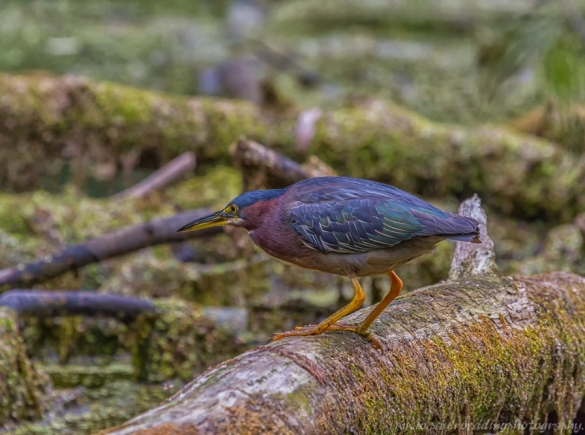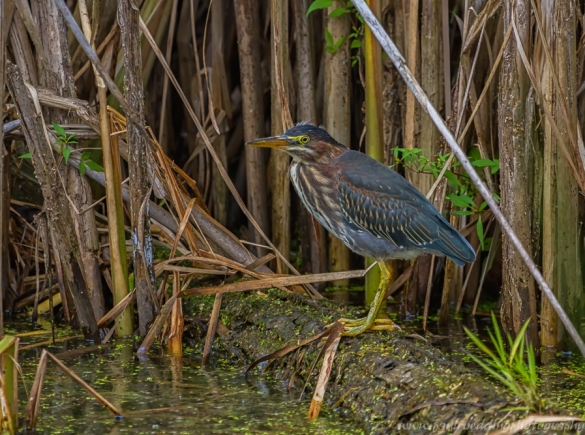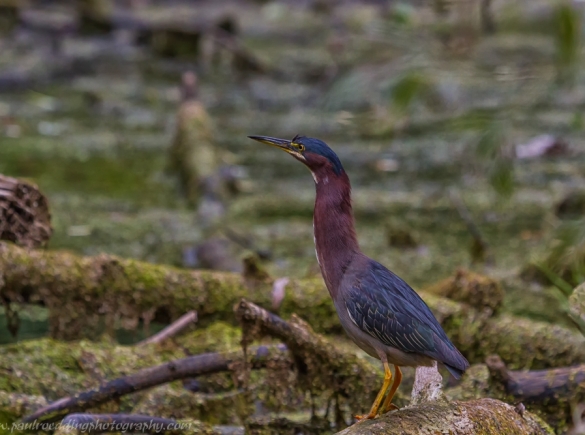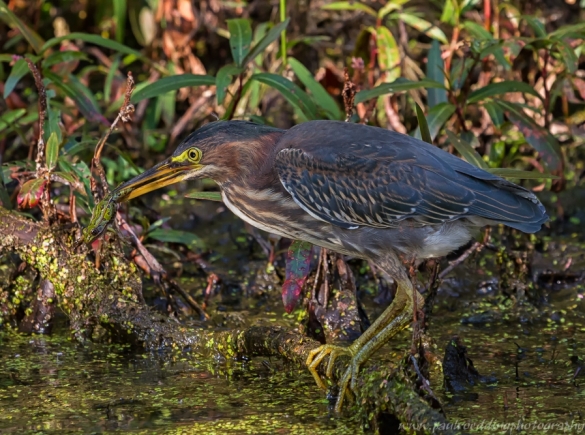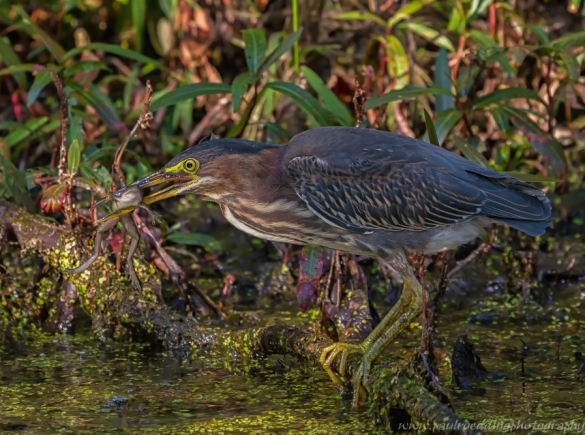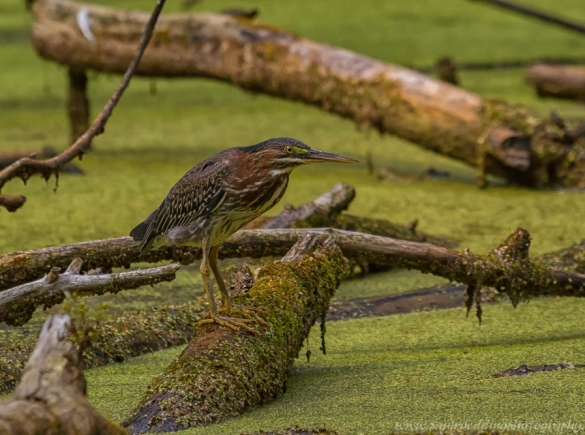
On Friday September 22, I celebrated my 40th birthday. Not wanting a big party or anything fancy, my only wish was to go birding with my wife at Point Pelee National Park. Despite being the first day of fall, the weather was certainly more summer-like with a high temperature near 30 degrees Celsius and a humidex factor making it feel like 35. Packing a picnic lunch and plenty of water we hit the road at 8 a.m.
Birding in Point Pelee National Park is great anytime of year, but during fall migration it can be incredibly rewarding. The hot weather combined with an east/southeast wind made for less than favourable migration conditions, but I was still optimistic some birds of prey and Monarch Butterflies would be on the move.
On the drive from London to Leamington good numbers of Monarch Butterflies were observed as they flew high over the 401 and alongside highway 77. I couldn’t help but wonder what the Monarch numbers would be within Point Pelee National Park.

Arriving at the park just after 10 a.m. we parked the car at the visitor’s centre, loaded our gear, and made our way over to catch the shuttle to the tip. Having just missed the shuttle we had about 20 minutes to wait before it returned, but were treated to some great views as many birds were present around the visitor’s centre. Most notably was the steady stream of Sharp-shinned Hawks making their way through the park in a southerly direction. At one point, one of these agile raptors dropped down quite low only a few metres in front of me as it pursued an unidentified songbird.

When the shuttle returned, we hopped on and made our way to the tip. Walking along the west side several warbler species were observed including Magnolia, Blackburnian, and Chestnut-sided. A Belted Kingfisher could be heard and then seen as it flew from a Poplar Tree at the water’s edge. As we walked out on the sand tip a flock of about 20 Sanderlings were flushed by a group of people posing for a picture on the southernmost point of mainland Canada. Luckily, one of the birds circled back and landed only a few feet away providing excellent views.
Looking back over the treeline a large flock of Blue Jays was seen moving through the treetops as a lone Monarch Butterfly made its way out over the lake. Surprisingly, this was the only Monarch seen in the park on this day. The stream of Sharp-shinned Hawks continued with several Cooper’s Hawks, Northern Harriers, American Kestrels, and Merlin mixed in. To the east floating in the waters of Lake Erie were several gulls including Herring, Ring-billed, and Great Black-backed.

Making our way back up to the shuttle, 5 Bald Eagles, 3 juveniles and 2 adults flew by overhead in the span of about 5 minutes. Arriving back at the visitor’s centre we made our way onto the Woodland Trail. Activity along this trail was rather quiet, but several woodpecker species were observed with more warblers and vireos heard as Turkey Vultures circled overhead.
All in all it was a great day birding at Point Pelee National Park with impressive numbers of birds of prey observed. Songbirds were a challenge to locate I think partially due to the leaf cover, but also due to the abundance of raptors present, especially Sharp-shinned Hawks. These agile birds have no problem navigating through wooded cover in search of unsuspecting songbirds. That being said, we tallied over 30 species on this day.

Later in the week, a significant drop in temperate accompanied by northwest winds saw more migrants on the move. Wednesday morning while looking out into my yard, I noticed several Magnolia Warblers drinking from my water feature and flitting between my birch tree and dogwood bush as they fed on insects. As the temperature warmed up throughout the day, I observed Monarch Butterflies stopping to nectar on my goldenrod and New England Asters.

With the day off work Thursday, I decided to make the short drive to St.Thomas, Ontario and hike around Dalewood Conservation Area. The 6.6 km trail circling the reservoir features a mixed habitat and revealed several species both migrant and resident birds. Large flocks of Blue Jays and Cedar Waxwings were observed throughout the area and were by far the most prevalent birds observed. It was evident that the overnight northwest winds had brought with it several migrants as White-throated Sparrows, Ruby-crowned Kinglets, Nashville Warblers, and Yellow-rumped Warblers were all observed. Large quantities of Red-eyed Vireos were also present.

After concluding my hike, I decided to continue 10 minutes south down highway 4 to another one of my favourite birding destinations, Port Stanley, Ontario. With the wind still blowing quite hard from the northwest, large quantities of Turkey Vultures could be seen soaring high over the village. A few Broad-winged Hawks were also observed circling overhead as they moved west.
Leaving Port Stanley via Scotch Line, I checked the sewage lagoons to see what was present. A small group of Ruddy Ducks, several Wood Ducks and three Northern Shovelers were among the waterfowl present. A few Killdeer and Solitary Sandpipers were observed foraging along the muddy banks while two Eastern Phoebes perched near the observation tower overlooking cells one and two. Continuing along Scotch Line, several American Kestrels were observed perched on the power lines while even more Turkey Vultures were seen overhead.

Before heading back to London, I made a brief stop at the Fingal Wildlife Management Area. With a strong wind blowing across the open meadow, I was not expecting to see much here as many of the songbirds would likely be deeper in the forest or at least along its edge out of the wind. Running out of time for the day my search was limited to the tallgrass prairie surrounding Ian Carmichael Pond. On the pond I observed 3 Double-crested Cormorants and a Great Blue Heron, while several Red Admiral Butterflies were seen along the edge of the bean field. At the far end of the pond a Northern Flicker called from a dead tree as several Blue Jays and a few Sharp-shinned Hawks passed by overhead.
The arrival of fall-like temperatures and northwest winds has brought several new migrants to our area. With plenty of sunshine in the forecast it looks a great weekend to head out birding. North winds on Saturday should make for another nice flight of raptors, especially along the Lake Lake Erie shoreline. If you are searching for some of the warbler species that have appeared this week, be sure to find a spot out of the wind where insects are abundant. Leeward forest edges or hillsides are great places to look. Also look for any fruit bearing trees and shrubs as these too will attract a variety of hungry migrating songbirds.
If time permits, take advantage of this beautiful fall weather and head out in search of some of these fascinating migrants. Regardless of where you bird, I’m sure you will find an abundance of species present as conditions have been ideal and waves of migrants are on the move.
Good birding,
Paul
*My 2018 calendars have arrived and are now available for purchase. To see the images featured and to purchase click here.*

